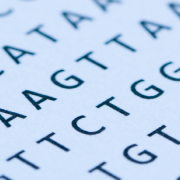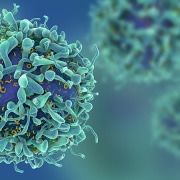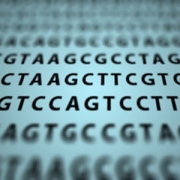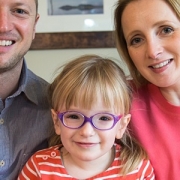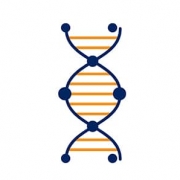Looking back: genomics in 2021
As we approach the end of 2021, we look back on the key developments in genomics and their impact on healthcare and society
In another year punctuated by the Covid-19 pandemic, genomics has become more visible, with technologies like mRNA vaccines and gene therapies moving further into public consciousness.
But 2021 has been about more than just the virus, and our understanding of genomics all across healthcare has only increased. Read on to explore some of the most exciting highlights from the past year.
Completing the human genome
This year, after two decades of work on the human reference genome, the first truly complete sequence of the human genome was finished.
Before this point, the sequence excluded several repetitive regions of the genome amounting to around 8%, including the telomere and centromere regions of the chromosomes. These regions do not contain genes but are important for structural maintenance of the chromosome and for pairing up chromosomes during cell division.
Because next generation sequencing (NGS) can only work with shorter fragments of DNA, long and repetitive sections of the genome have been extremely difficult to sequence in the past. Long-read sequencing, a newer technology, allowed the Telomere to Telomere (T2T) consortium to finally complete the genome in 2021.
To learn more about the history of genomic sequencing, read our article: Are we there yet? Genome sequencing turns 20
Enter mRNA vaccines
If 2020 was the year of Covid-19, 2021 will be remembered as the year of the vaccine. In genomics, the Pfizer BioNTech and Moderna vaccines were especially notable, being the first RNA vaccines licensed for any condition.
Traditional vaccines work by presenting the immune system with a dead or weakened version of the target virus, or a piece of it. The Oxford Astra-Zeneca vaccine does exactly this, delivering the SARS-CoV-2 spike protein into the body so the immune system can learn to recognise it.
The new mRNA vaccines work differently, delivering instructions so the body’s own cells can manufacture the spike protein, with the same result. The RNA fragments are broken down after the protein is made, so there is no change to the body’s DNA, as we explained in this blog article on the difference between mRNA vaccines and gene therapies.
To read more of our ongoing coverage on Covid-19, as well as historical articles published since the start of the pandemic, visit our Covid-19 blog topic.
NGS pioneers win prizes
University of Cambridge professors Shankar Balasubramanian and David Klenerman won two major awards this year for their work developing NGS.
In May, they received the delayed 2020 Millenium technology prize, awarded by Technology Academy Finland to recognise ‘innovations that promote the wellbeing of mankind and society’.
The pair added to their accolades in September, being announced as winners of the 2022 Breakthrough Prize in Life Sciences, shared with French biophysicist Dr Pascal Mayer. They won the prize ‘for the development of a robust and affordable method to determine DNA sequences on a massive scale, which has transformed the practice of science and medicine’.
Want to learn more about the most recent advances in genomic sequencing? Read our dedicated blog topic
Gene therapies: from strength to strength
In 2021, NICE approved a gene therapy called Zolgensma for spinal muscular atrophy (SMA). SMA is the leading cause of death among young children in the UK, and, without treatment, those with the most severe form are unlikely to live beyond two years of age
The gene therapy for SMA is a one-off treatment that can save lives and stop the disease progressing. If delivered early enough, it can allow children to achieve milestones such as sitting, crawling and walking.
Results from clinical trials published in 2021 showed that children who had an experimental gene therapy at Great Ormond Street for a rare form of immunodeficiency called ADA-SCID are still healthy after 10 years. A more recent gene therapy for the same condition (using a different type of delivery system) was also found to be effective.
Gene therapy trials have now shown promising results for a wide variety of conditions including sickle cell disease and thalassaemia, sight loss, and amyloidosis.
View our blog topic to explore the latest news on gene therapies, including those newly-approved by NICE.
–



